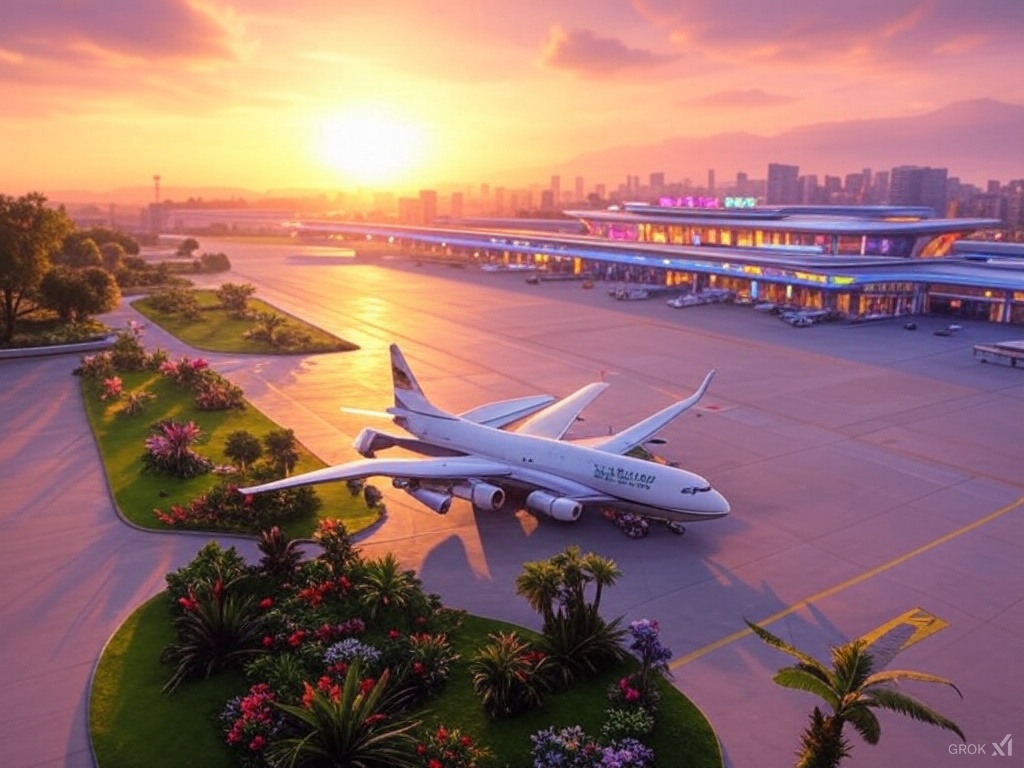The Dusty Beginnings: Picture this: it’s 1934, and the Iraq Petroleum Company (IPC) is carving out a scrappy little airstrip in the middle of nowhere Qlayaat, a speck on the map in Lebanon’s northern Akkar region. Seven kilometers from Syria, 26 from Tripoli’s salty port air, this wasn’t some grand aviation dream.
It was a workhorse, a gravel patch for shuttling oil workers and gear across the Middle East. Small planes buzzed in and out, kicking up dust under the watchful gaze of Akkar’s cedars. For 30 years, it hummed along quietly unnoticed, uncelebrated, just doing its job while Beirut hogged the spotlight.
From Oil to Fighter Jets
Fast forward to 1966, and the Lebanese Army saw something the oilmen didn’t. They swooped in, took over from IPC, and with a helping hand from France, turned that humble strip into a proper military airbase. The runway got a serious upgrade longer, stronger and soon, Mirage III jets were screaming overhead, their pilots fresh from French training camps.
By the late ‘60s, Kleyate Air Base, as it was called then, was a crown jewel in Lebanon’s military lineup. It was a flex of muscle and modernity, a northern outpost in a country teetering toward chaos as the civil war loomed.
A Taste of Civilian Wings
The war hit in 1975, tearing Lebanon apart, but Qlayaat got a brief moment in the civilian sun. By the late ‘80s, with the fighting winding down, Middle East Airlines (MEA) rolled the dice on domestic flights Beirut to Qlayaat, a lifeline for the north.
From 1988 to 1990, those planes were a rare bright spot, backed by Tripoli’s own Rachid Karami, the prime minister with a soft spot for his home turf. For two years, Akkar folks could hop a flight to the capital without trekking south. But the war’s hangover was too much flights fizzled out by ’90, and the base went back to its military day job.
The Day History Landed
November 5, 1989, was Qlayaat’s big cameo. With the civil war gasping its last breaths, Lebanon’s parliament needed a safe spot to pick a president.
They chose the airbase remote, neutral, away from Beirut’s sectarian snipers. René Moawad, a Maronite with a knack for bridging divides, won the vote. Hope flickered. Then, 17 days later, a car bomb in Beirut snuffed him out.
The airbase got his name René Moawad Air Base a bittersweet honor for a man who barely got started. It was a turning point, but not the kind anyone wanted.
Bombs and a Long Silence
The base kept its military gig into the 2000s, but trouble wasn’t done with it. July 13, 2006: Israel’s war with Hezbollah turned Qlayaat into a target. Airstrikes ripped through, cratering its 3,000-meter runway one of Lebanon’s longest and leaving the place a mess.
The Lebanese military patched it up eventually, stubborn as ever, but the scars stuck. For years after, it sat there functional, sure, but a shadow of what it could’ve been.
In Akkar, where jobs are scarce and poverty bites, people couldn’t help wondering: why not more?
A Northern Dream Stirs
By the 2010s, Qlayaat was back in the conversation not as a military relic, but as a potential game-changer. Beirut’s Rafic Hariri Airport, stuck in Hezbollah’s backyard, was Lebanon’s only real air hub too crowded, too risky.
Northern politicians, especially from Tripoli’s Sunni bloc, started pushing hard. In 2010, Dr. Hamdi Chaouk, Lebanon’s civil aviation boss at the time, floated a plan: turn Qlayaat into a cargo and budget-flight hub. The cabinet gave a thumbs-up in 2012, tossing out cost guesses of $45 to $90 million, maybe with private cash to foot the bill. Jobs, trade, a boost for Akkar it sounded like a no-brainer.
But Lebanon’s politics had other ideas.
Hezbollah balked Syria’s just over the hill, they said, and what about ISIS sneaking in? Never mind that the real issue might’ve been losing grip on Beirut’s airport cash cow. The plan gathered dust, another casualty of Beirut’s endless power games.

Crisis Lights the Fuse
Then came the one-two-three punch: Lebanon’s economy tanked in 2019, the Beirut port blew up in 2020, and Israel started rattling sabers again by 2024.
Suddenly, having all your eggs in Beirut’s basket looked reckless. MPs like Selim Sayegh weren’t shy about it: “We need Qlayaat. It’s not optional anymore,” he told anyone who’d listen in 2023. With Israeli jets buzzing closer to Beirut’s runways, the north’s distance from the chaos was a selling point.
Studies pegged it at 5,000 (estimat) jobs a lifeline for a region where kids grow up dreaming of anywhere but home. There were hiccups, of course.
The runway’s wind patterns need Syrian airspace clearance, and there’s no control tower. No biggie, said Mazen Sammak, a top pilot in 2024 Beirut can handle the traffic, and Syria’s playing nice these days. The pieces were falling into place, after the fall of the Assad regime.
February 2025: Takeoff in Sight?
Here we are, February 20, 2025, and Qlayaat’s got a pulse again. A president’s finally in office after two years of nothing, sworn in the beginning of 2025, and the government’s got infrastructure fever.
Word’s leaking out workers are smoothing that bombed-out runway, cash is being hunted from donors and investors.
MP Sajih Attieh’s practically shouting from the rooftops: “This isn’t just an airport it’s the north’s shot at mattering.” No ribbon-cutting date’s set, but the vibe’s unmistakable: René Moawad Air Base is waking up.
From an oil company’s pit stop in ’34 to a war-torn military hub, Qlayaat’s seen it all. Now, 91 years later, it’s itching to be more a northern phoenix, wings creaking open. Lebanon’s held its breath long enough.

